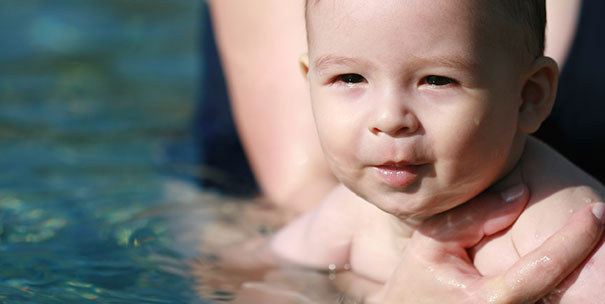
When your swimmer has finally learned to breathe he or she will actually be able to swim from edge to edge without stopping to get a breath. It often takes a lot of time and repetition to get to this day.
Here are some things to remember when your little one is in the learning process.
Exhaling is the most important thing in learning to breathe.
Most children just don’t know what to do under the water. They will do everything – move their arms, and their heads – even kick their feet – but they forget to blow air out.
How a child needs to breathe in the water can be taught and practiced in the tub. First sucking in a big breath and then saving it all to exhale everything in the water – and then repeat it. Count to 10 when the child is exhaling to make sure that they’re taking only one big deep breath when they bring their heads out of the water.
Water breathing exercises should only be done with adults around. That’s the only way it’s safe.
Rolling the head is another key skill to be able to incorporate breathing into swim strokes.
Practice this at home in the tub or by walking across the pool with a board, exhaling and rolling the head into their side breathing position. There is no “correct” side for breathing. It should be done on the side that feels comfortable to the child. No child will learn this by doing it once or twice. Repetition is the key to their being able to do breathing in the midst of everything else they must remember to do to swim.
Relaxation is critical to the entire process. Correct breathing, executing strokes and even keeping the body in the right position in the water is critical to swimming.
Breathing effectively is impossible when tense. Neither will the arms and legs work together to perform the strokes that move the body through the water. But most importantly, keeping the body in line and on top of the water won’t happen when the body is tense. If the swimmer isn’t relaxed the head may lift up, the feet drop and the swimmer will soon find him or herself in the standing position. And you can’t swim in the standing position.


Conversations